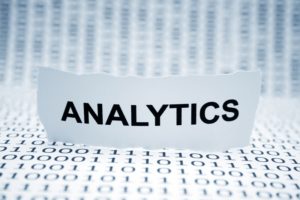Today, the data generated from all industry domains is also known as “Big Data”. It includes data collection, data analysis, and data implementation. Over the years, Big Data analysis trends are changing, from a division of the business based data system. This embraces the active technologies and increasingly focused on advanced analytics.
In order to participate in the Business Enterprises Competition, big data trends should be implemented. Previously, big data can be purchased primarily for large businesses, technologies and used channels to charge and analyze information. Today is the scope of big data. It leads to big business data for big business and small businesses. This also led to the growth of data growing at unbelievable speed.
Big Data Analytics Trends for 2019
The best example of growth is the big data in the cloud. It led to small businesses that take advantage of the latest technological trends. The never-ending flow of information is valuable to the business. It is challenging to obtain action awareness from a large data pool, which can be constructive. In addition to these roadblocks, the big data does not deny the fact that it offers excellent opportunities for business. There are “Top 7 Big Data Analytics Trends” here in 2019 to change the world of technology.
1. Fast Growing IOT Networks:
The Internet of Things (IOTT) is a trend that produces over $ 300 billion by 2020. According to the latest industry trends and research reports, the global IoT market will grow by 28.5% at CAGR. Business companies rely upon more data points to collect information for more detailed business insights.
2. Predictive Analytics:
Predictive Analytics provide customized insights. It leads to companies for producing new customer responses or purchases. It promotes cross-sell opportunities. Predictive analytics helps technology integration into diverse sectors such as finance, healthcare, automotive, aerospace, retailing, hospitality, pharmaceuticals, and manufacturing industries.
3. Dark Data:
Dark data on digital information technology is currently not in use for business analysis. This data can be obtained through various computer networking operations. They are not used in intrusions or in decision making. As analytics and information organizations change daily, it is important to understand that any data can be lost and leads to security risk.
4. CDOs in Demand:
The profile of the Chief Data Officer (CDO) has grown and scouting human resources for professionals who fill this advanced job role. Despite the demand, CDO is a new concept for many companies. Companies have learned that a CDO is required. So, if you are reading data-wide data cleaning, analysis, visualization, and intelligent thoughts, CDO might be your work profile.
5. Quantum Computing:
Tech giants, such as IBM, Microsoft, Google, and Intel, compete for each other to work on a bid to build the first quantum computer. Quantum computing can address data encryption, atmospheric reference, complex medical problems, development of real-time conversations. It improves the economic model for developing quantum computing components, algorithms, applications and software tools in quat cloud services.
6. Open Source:
In 2019, Cloud will witness more free data and software tools. Smaller organizations and start-ups incorporate this data trends in 2019. Open source analytical languages, such as R, saw a large receipt credit to a GNU project open source wave connected with statistical computing and graphics.
7. Edge Computing:
Edge Computing has been for a short time now in the technology stream network performance. Data analysis includes all credits to edge computing. These partially depend on network bandwidth. It will store local data close to the data source. Data is used to maintain and store data from the Sino Setup from wiping out users when processing Edge computing data itself or in the foil layer or the edge data center. Also read 5 Big Technology Innovations of 2018




